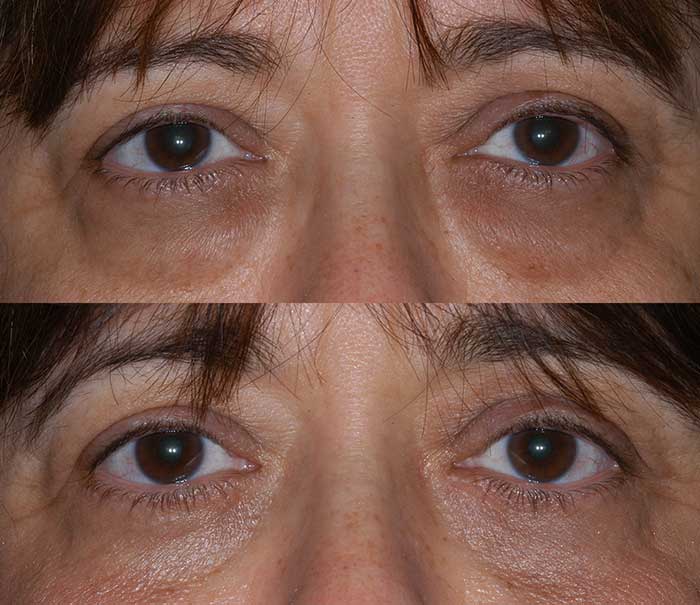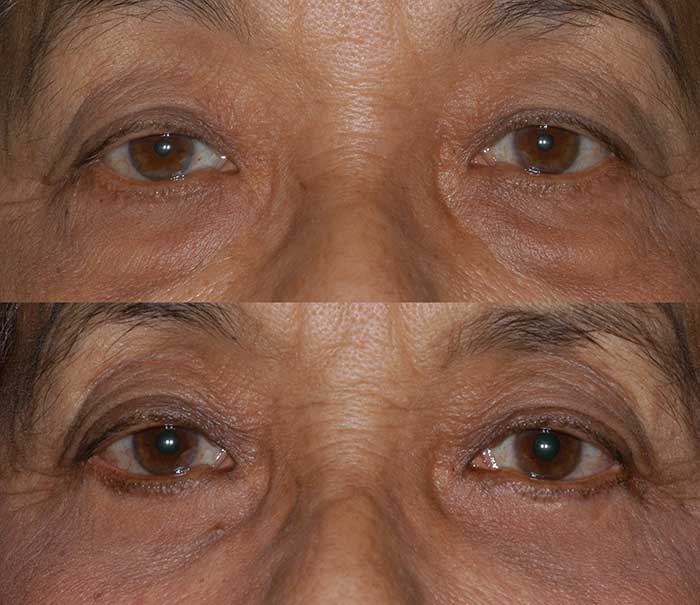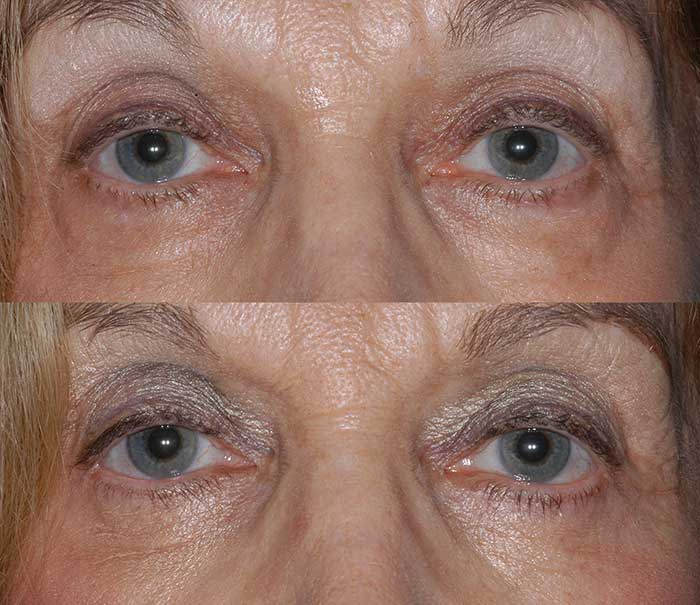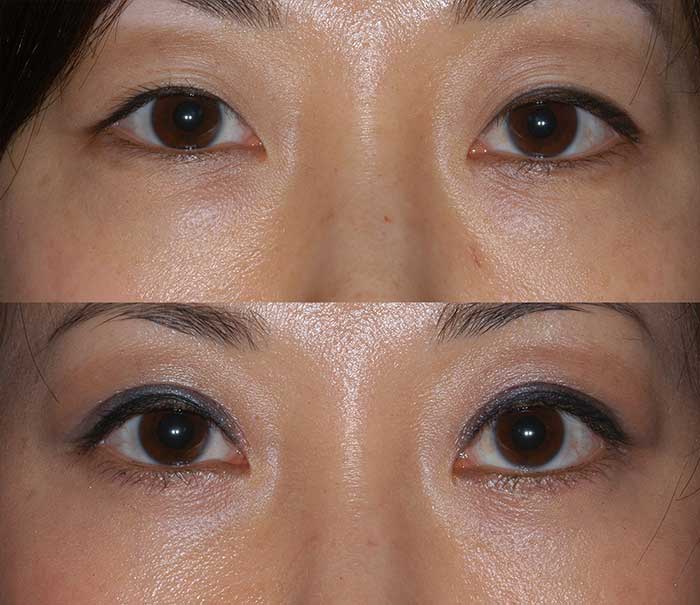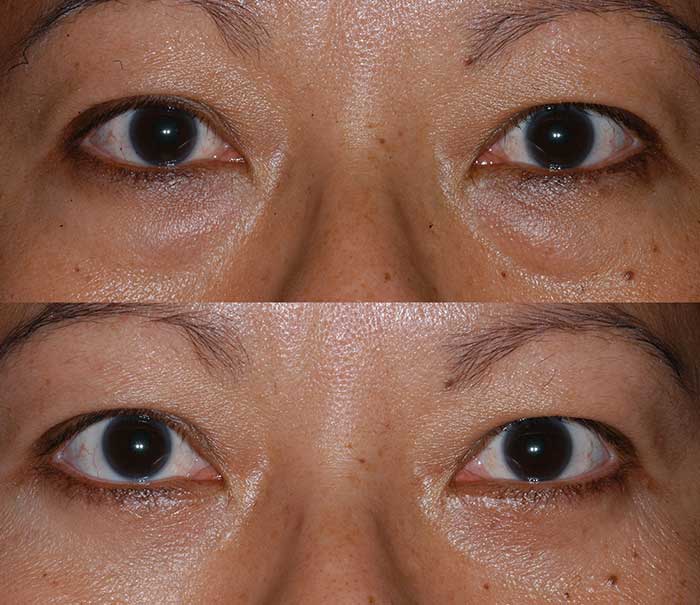Lower Eyelid Surgery
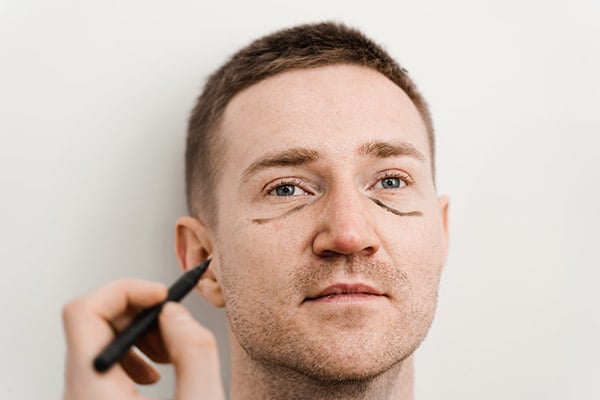
Aging and gravity cause a number of changes in the lower eyelids, including the development of bulges or bags, slackening of the skin, and formation of an indentation between the lower eyelid and cheek. Bulges or bags occur because pockets of fat push forward through the lower eyelid. While everyone normally has fat behind their lower eyelids, younger eyelids are tighter and hold the fat back; aging eyelids loosen, allowing the fat to bulge forward. The lower eyelid skin slackens and wrinkles with age because it loses elasticity, in the same way, that an old rubber band loses its ability to snap back to its original size. The indentation or hollowing at the junction of the lower eyelid and cheek occurs partly because of bags causing a shadow effect below, and partly because the cheeks descend with gravity and age, leaving a hollow or gap (“tear trough”) where the cheeks used to occupy.
Lower Eyelid Surgery in Miami, FL
Lower eyelid surgery, otherwise known as lower eyelid blepharoplasty improves the appearance of lower eyelids in two ways: it flattens bulging pockets of fat and removes excess skin. It also does not improve vision in any way, so is always considered cosmetic and is never covered by insurance.
Not every patient is a good candidate for this surgery. If the cheekbone is set in too deeply, full removal of bags may cause a sunken or hollow appearance. If the skin over the cheek has become stretched out over time, cheek pouches called festoons may result; these cannot be flattened with traditional lower eyelid surgery alone. If a patient’s major complaint is skin wrinkling occurring with smiling, these cannot be corrected by blepharoplasty, because they are the result of muscle activity and not due to excess skin.
Dr. Junhee Lee uses a two-incision approach for lower eyelid blepharoplasty. Fat is removed from the lower eyelid by a hidden incision on the inside of the eyelid (trans-conjunctival incision). Excess skin is then removed using an incision just below the eyelashes. Neither of these incisions causes any visible scar. Historically, lower eyelid blepharoplasty was performed using a single incision just below the eyelashes, but this was found to cause the lower eyelid to sink to a lower position in a certain percentage of patients (“lower eyelid retraction”, see picture). The two-incision approach used by Dr. Lee has been shown in studies to not cause lower eyelid retraction1,2.
Lower eyelid blepharoplasty can do wonderful things for patients, but it is important to have realistic expectations from the surgery. Lower eyelid blepharoplasty cannot do the following:
- Make your lower eyelids look the way they did when you were twenty (unless you are twenty)
- Eliminate all skin wrinkles
- Pull up the cheeks to fill in the tear trough, as this would be part of a facelift.
The risks of surgery are the same as for upper eyelid blepharoplasty. Blindness has been reported to occur in a very small percentage of patients (0.005%, or 1 out of 20,000 patients; note that you are twice as likely to die in a car accident over the next year than you are to go blind in one eye from blepharoplasty). Infection is possible with any surgery, but the chance of it occurring is incredibly low with eyelid surgeries due to the excellent blood flow in the eyelids.
- Ophthalmic Plastic and Reconstructive Surgery. 2008 Jan-Feb;24(1):7-9.
2. Ophthalmology. 1989 Jul;96(7):1027-32.

